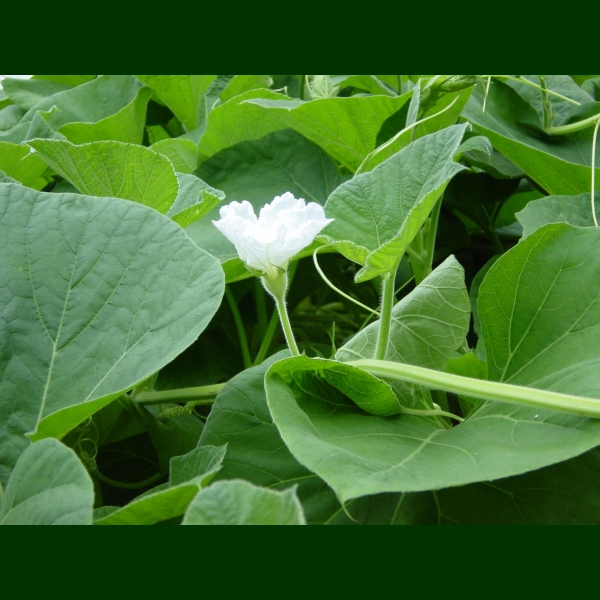 Hawaiian Name(s): ipu, ipu nui, hue, pōhue, ipu ‘awa‘awa
Hawaiian Name(s): ipu, ipu nui, hue, pōhue, ipu ‘awa‘awaScientific Name: Lagenaria siceraria
Vernacular Name: bottle gourd
Family: Cucurbitaceae
Status: Polynesian introduction (not naturalized)
Authority: (Molina) Standl.
Description: Climbing vine.
Habitat Annual that thrives only under cultivation. It grows best in dry areas with some type of suppprt so the fruit won‘t spoil (Lucas 1982:38).
Medicines: For treatment of hehena a moe‘ole a ka po, young leaves are ingested in conjunction with dried niu (coconut, Cocos nucifera) and ‘uala (sweet potato, Ipomoea batatas). For illnesses such as papaku, hoaka, and wai‘opua the flesh of the ipu is combined with noni fruit (Morinda citrifolia) and water and delivered as an enema. For pu‘ao pelu and maybe ha‘ule, the treatment combines ipu fruit flesh with leaf buds, leaves, and stems of the kukaepuaa (Digitaria setigera) (Chun 1994:117–120).
Non Medicinal Uses: The hardened fruit is made into a variety of containers, for water, food, dyes, etc. (Krauss 1993:19–22). Also used for musical instruments, such as the bases of ‘uli‘uli (hula rattles), knee drums, ‘ulili, pa ipu or ipu heke (a percussion instrument made by joining two ipu, one atop the other) (Abbott 1992:120; Krauss 1993:881–83). The ipu was also used to chase away sharks (Lucas 1982:39) fisherman carried their lines and hooks in gourds and taken on sea voyages so if the canoe overturned the gourds would float and could be retrieved (Kamehameha Schools 1994:15). Ritual use includes headgear depicted by the Cook expedition (e.g., see Weber's illustration in Abbott 1992:78). They served as masks worn by priests and not by warriors, as the ipu is fairly fragile.
Specific gravity of wood: unknown
Famous Locations:
Mele:
`Ōlelo Noeau: [I] ‘A‘ohe ipu ‘opio e ‘ole ka mimino i ka la. No immature gourd can withstand withering in the sun [without care]. No child can get along without adult supervision. [II] Ua malo‘o ka pua hue. The gourd blossom has withered. Said of a person withered with age
Dye Color and Parts:
Kino lau: LONO.
Location on Bishop Museum Kalihi Campus:
Propagation Information: Handy et al. (1972:215–217) suggest that the beginning of the rainy season is the proper time to plant ipu. This allows for the hot, dry summer months to bring them to maturity (in about 6 months). While the ipu is growing the vine can be propped up with a small frame of sticks (ko‘o la‘au or haka) to keep the ipu up off the ground. In addition, stones that might mar the base of the ipu are removed and grass, leaves, or a board can be placed below.
Seed: Seed length approximately 17 mm. Photograph: H.Lennstrom.

